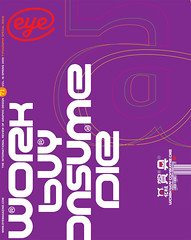Spring 2009
Sibylle Hagmann
‘The time of the garage genius is over’
Sibylle Hagmann is a Swiss designer, writer and creator of Odile (2006). She teaches design at the University of Houston in Texas.
Unmatched technological advancements, complexity and sophistication drive today’s premier typefaces, which share a high degree of formal refinement invested in their development. The time of the individual genius designing fonts in the garage is over. Expertise is once again needed to craft a genuinely good typeface.
Drawing glyphs can still be a lonely and nerdy activity, but OTL feature writing, quality control, and final font production are tasks best divided between experts – like the teamwork required by complex website design. The fortunate users who manage to take advantage of (and afford) these multifaceted applications, luxuriate in copious numbers of weights, choose from a variety of numeral sets and decide upon dedicated text and display weights – an extravaganza offered, for example, by Hoefler & Frere-Jones’ highly refined Mercury family.
Trixie HD, a resurrected typewriter face first created in 1991, celebrates randomness and the potential of technology – evinced by its simulacra of simulated smudges, wobbling ribbon, dust, and the kind of irregularities impossible on a ‘real’ mechanical typewriter. LettError’s impish online trailer (letterror.com/index.html) revels in Trixie HD’s 10,824 glyphs, 1,331,370 contours and 17,193,327 points. A typewriter face, characteristic of relatively predetermined glyph forms owing to the typically monospaced setting, is, in turn, galvanised by a technological ‘type dream’.
First published in Eye no. 71 vol. 18 2009
Eye is the world’s most beautiful and collectable graphic design journal, published quarterly for professional designers, students and anyone interested in critical, informed writing about graphic design and visual culture. It is available from all good design bookshops and online at the Eye shop, where you can buy subscriptions and single issues.

